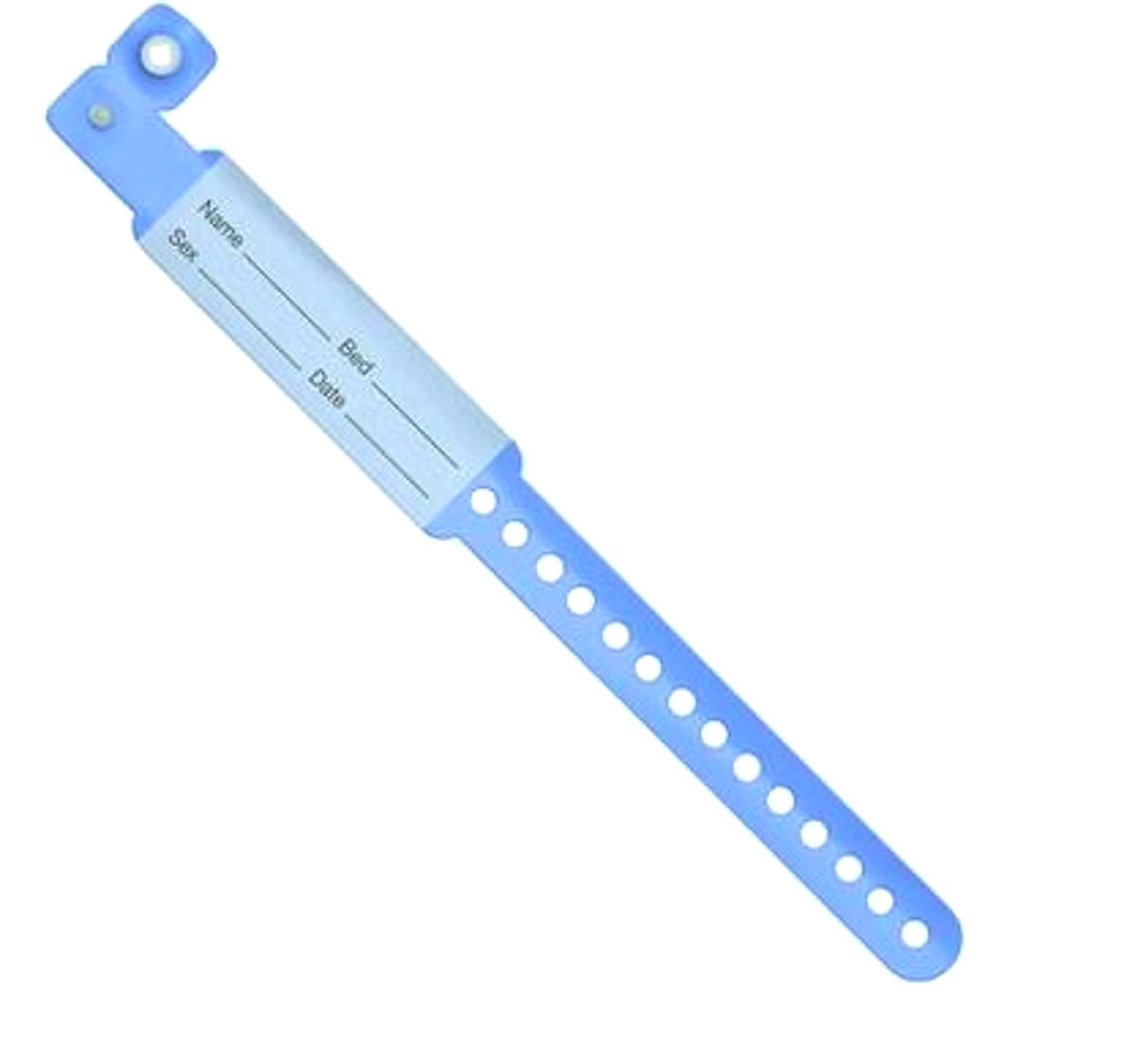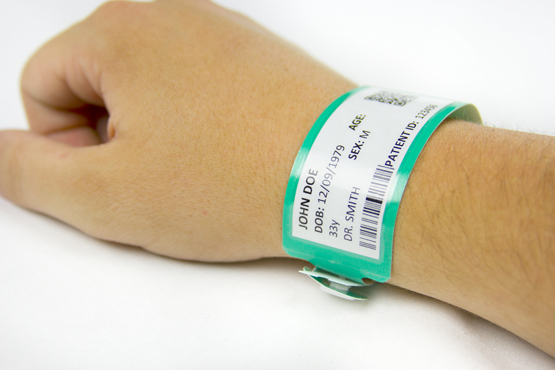How to Choose the Right Patient Wristband for Your Healthcare Facility
How to Choose the Right Patient Wristband for Your Healthcare Facility
Blog Article
Exploring the Various Kinds Of Patient Identification Band Utilized in Medical Facilities
In the detailed globe of medical care, the important duty of Patient Identification bands usually goes undetected. These bands, differing from straightforward paper wristbands to innovative RFID bands, form the backbone of Patient safety methods, guaranteeing precision in Patient Identification. Yet, the large diversity of these bands, each with its one-of-a-kind advantages and restrictions, is commonly neglected. As we browse with this topic, one may gain understanding right into the refined complexities and essential importance of such bands in clinical centers.
Comprehending the Importance of Patient Identification Bands
While they might seem like plain devices, Patient Identification bands play an essential function in medical centers. These bands serve as an important tool for validating Patient identity, stopping medical mistakes related to misidentification. Patient Identification bands additionally aid in simplifying administrative tasks, making certain precise record-keeping and payment.
Traditional Paper Wristbands: Their Usage and Limitations
Standard paper wristbands have actually been a staple in Patient Identification across various medical centers. While their use prevails, they nurture certain constraints that might influence their effectiveness in Patient management. This area will concentrate on the scope of their application and the integral downsides connected with their use.
Paper Wristbands: Usage Scope
In the world of Patient Identification, paper wristbands have actually long held an essential role. These bands are usually utilized in outpatient setups, where the Patient's remain is short-term. The wristbands have vital information such as the Patient's name, day of birth, and a distinct Identification number. This basic, yet efficient system, enables medical professionals to quickly and precisely recognize individuals, guaranteeing the correct treatment is provided. Paper wristbands are also utilized in emergency situation scenarios, where rapid Identification is critical. Their use expands to events like blood contribution drives and mass vaccination programs, additionally stressing their flexibility. Despite advancements in technology, the simple paper wristband stays a dependable and economical solution for Patient Identification in different health care situations.
Limitations of Paper Wristbands
Regardless of their prevalent usage, paper wristbands are not without their downsides. In addition, paper wristbands typically lack the technical abilities of even more modern alternatives, such as barcoding or RFID chips, limiting their capability to just presenting created details. Paper wristbands can cause pain or skin inflammation to some patients, particularly when used for prolonged periods.
Barcoded Wristbands: Advancements in Patient Identification
While Patient Identification has actually long been a critical facet of medical care, the advent of barcoded wristbands signifies a considerable leap onward. These bands utilize the simpleness of barcoding modern technology, permitting for Patient information to be rapidly checked and accessed. They boost the speed and precision of Patient Identification, reducing the danger of medical mistakes connected to misidentification.
Radio Regularity Identification (RFID) Bands: an Action In The Direction Of Futuristic Healthcare
The advancement of Patient Identification bands has actually brought regarding the emergence of Superhigh frequency Identification (RFID) Bands (patient identification band). These cutting-edge tools present crucial advantages for medical care facilities, supplying a much more efficient and highly advanced ways of Patient Identification. The application of RFID in medical care is a substantial step in the direction of an extra futuristic method to Patient monitoring and security
Comprehending RFID Bands

RFID Bands: Secret Advantages
Welcoming a future where modern technology and medical care combine, radio regularity Identification bands supply numerous crucial advantages. Primarily, these bands enhance Patient safety and security by providing exact, immediate Identification, therefore decreasing medical mistakes. RFID bands can store a large amount of Patient data, including case history and allergies, making it possible for customized treatment. They also simplify administrative jobs, as the automated data entrance changes hands-on processes, enhancing performance and decreasing documentation. RFID bands use real-time monitoring of clients, essential in risky environments such as surgical treatment or intensive care. These bands are durable and resistant to ecological elements, making certain consistent performance. Generally, RFID bands stand for a substantial advancement in Patient Identification technology, benefiting both patients and medical care suppliers.
Implementing RFID in Health Care
These bands supply a seamless way to track and recognize individuals, guaranteeing their security and improving effectiveness in treatment procedures. RFID bands lower clinical errors by providing exact Patient Identification, which is vital in preventing misdiagnosis or wrong medicine administration. Hence, the application of RFID bands is a significant action towards enhancing Patient safety and security and medical care delivery.

Color-Coded Wristbands: Helping in Quick and Accurate Medical Diagnosis
In the have a peek at these guys busy setting of a medical facility, color-coded wristbands have arised as vital devices for swift and exact Identification of a patient's clinical condition. These wristbands, worn by individuals, carry certain shades that match to different medical conditions or standings. This system is created to use instant visual cues to health care companies, enhancing Patient safety and security and care top quality.
Strategies for Efficient Execution and Management of Patient ID Bands
Attaining ideal usage of Patient Identification bands demands a well-structured method for their execution and monitoring. The initial step involves training all health and wellness personnel on the importance of correctly using and checking out these bands. Healthcare facilities ought to find more info systematize the usage of ID bands across all divisions, ensuring uniformity and lowering inconsistencies. Regular audits needs to be conducted to verify adherence to policies and to correct any type of disparities. Patient education is likewise essential; patients have to recognize the function of the bands and the need for their continuous wear. patient identification band. Lastly, it's necessary to have a back-up strategy in location, such as barcode scanning or biometrics, to make sure that Patient Identification is never ever compromised.
Verdict
Patient Identification bands are important in medical facilities to make certain security and accuracy. Standard paper, barcoded, RFID, and color-coded wristbands each hold distinct advantages, varying from cost-effectiveness to sophisticated data storage and instantaneous clinical signals. Effective implementation and monitoring of these bands can dramatically decrease clinical errors, enhance performance, and boost general Patient care. Thus, understanding and making use of these Identification tools is extremely important for maintaining high standards in healthcare.
These bands, differing from simple paper wristbands to innovative RFID bands, form the backbone of Patient safety protocols, making navigate to this website sure precision in Patient Identification.The advancement of Patient Identification bands has actually brought concerning the emergence of Radio Frequency Identification (RFID) Bands. Overall, RFID bands represent a substantial development in Patient Identification innovation, profiting both patients and healthcare carriers.
RFID bands reduce clinical errors by offering exact Patient Identification, which is important in protecting against misdiagnosis or incorrect medicine administration. Patient education and learning is likewise important; patients must recognize the function of the bands and the requirement for their constant wear.
Report this page